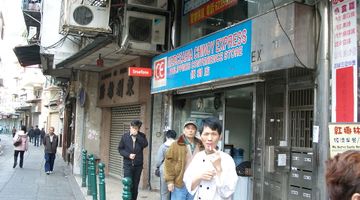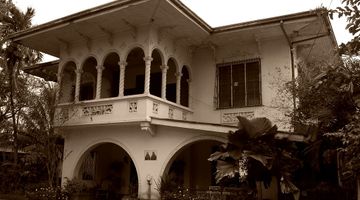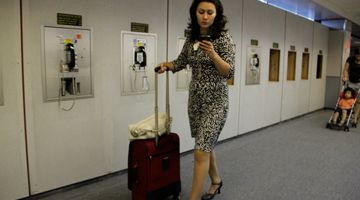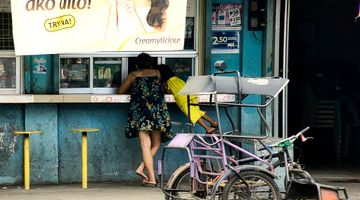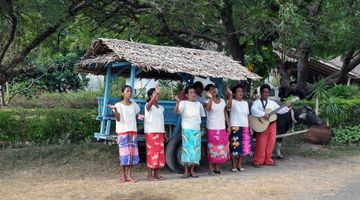Transport in the Philippines
Owing to the fact that the magnificent Philippines is an archipelago, with an absence of land connections to neighbouring countries, means that getting in via plane is really your only option.
Luckily for wannabe travellers to the Philippines, daily flights from pretty much every destination in the world are common and regular. Making it even easier to touch down in tropical paradise, is the fact that there are ten international airports scattered throughout the foamy, turquoise splashed islands.
The main international airports in the Philippines
The main international gateway to the Philippines is via Ninoy Aquino International Airport in Manila and strong runner-ups would be Mactan-Cebu International Airport in beautiful Cebu, and popular Kalibo International Airport in Kalibo.
All of these airports are centre stage of the Philippine archipelago and are beyond the typhoon belt; two massive bonus points for locals and visitors alike.
Other airports in the Philippines
Puerto Princesa International Airport in Puerto Princesa is another airport to mentally jot down as it is the one and only international airport in the whole of dreamy Palawan – one of the top ranked islands in the world. The other international airports are located in Clark, Davao, General Santos, Laoag, Subic Bay and Zamboanga.
How to get to the Philippines from...
Numerous airlines fly frequently to and from the Philippines and the vast majority of visitors arrive to the beckoning Filipino cities via plane.
Europe
Getting from Europe to the Philippines is achieved with Philippine Airlines who offer a continuous stream of flights between London, Heathrow and Manila daily.
Also on the Philippine bandwagon is Turkish Airlines who have daily nonstop flights from Istanbul (Atatürk Airport) to Manila. Getting from Amsterdam to the Philippines is possible with KLM with a stop in Taipei, Taiwan.
South East Asia
Fortunately getting to the Philippines from Southeast Asia is easy enough too due to the frequently running daily flights of the Southeast Asia networks. This calls for a big sigh of relief from all those wanting to get to the Philippines from Singapore, Thailand, Malaysia and Brunei.
Passengers flying to the Philippines from South Asian Countries can fly direct via Bangkok (3 hour, 25 minutes), Singapore (3 hours, 40 minutes) or Hong Kong (2 hours, 15 minutes).
Getting to the Philippines from China can be done via a direct flight from Beijing, Shanghai, Hong Kong, Macau, Xiamen and Taipei. Airlines that offer these flights are Cebu Pacific and Philippine Airlines. It’s usually a 4 hour 40 minute flight with the majority of flights leaving at 12:55 CST. All in all a very simple and straightforward affair and fast enough to make it for sunset.
Is it possible to get to the Philippines by sea?
Being a country with no land borders means that not only is international land travel to the Philippines impossible, but sea travel is almost equally as unfeasible.
Air travel is definitely the easiest option, but if you’re set on public maritime transportation, there is one international ferry route that one can opt for.
Getting from Mindanao in the south can take you to Malaysia Borneo and vice versa. However, this ferry runs between Zamboanga and Malaysia’s Sandakan and because of recent events is not recommended due to extreme safety concerns.
This sea route takes one across the Sulu Sea which is the playground of pirate and militant groups. Before travelling this journey it would be advisable to do ample research on the present situation. Aleson Shipping lines operates along this route every Tuesday and Friday with the ferry departing Zamboanga at 5pm. Tickets cost roughly PHP3,700.
How to get around the Philippines
By plane
As mentioned briefly already, traveling around the Filipino islands is easiest and fastest via plane. The route networks of the majority of local airlines are largely based around Manila, Cebu and Clark. There are however, a few direct flights between other Filipino cities too, although not quite as common.
Philippine Airlines and Cebu Pacific are the predominant domestic airlines connecting numerous cities with Manila and Cebu; whereas, Air Asia and Tiger Airways tend to serve the majority of the secondary destinations.
Although the majority of domestic flights within the Philippines are fairly affordable due to being run by low-cost carriers, air fares do increase considerably during peak travel seasons (Christmas, Holy week, or festivals and fiestas). Plan ahead, folks, it is worthwhile to book well in advance.
Note Something that travellers need to be mindful of, is the Philippine Airport Terminal Fee. Although inexpensive, this fee is collected in cash, in Philippine Pesos, at airports prior to check-in or prior to boarding. It is required by all departing passengers at selected airports in the Philippines and ranges from PHP50 to PHP200 per passenger for domestic flights or PHP550 to PHP700 for international flights.
By train
Due to hurricane damage, train travel between the various Filipino cities, such as the popular Manila to Naga City Route, was cancelled in 2012 and is still cancelled as of 2017. Sadly, as a whole city-to-city trains in the Philippines are sorely limited with the only functioning single-track railway (the Philippine National Railway) being in Luzon. It travels from Caloocan to Calamba with numerous stops throughout the journey.
Not including the Manilla commuter trains, there is only one line that runs from Manila to Legaspi, however most of that line is being repaired and so, only the section from Naga to Legaspi is working at this time.
Phew! So all in all, to avoid inevitable frustrations and disturbances in commuting between the idyllic cities of the Philippines one might do best to avoid city-to-city train travel altogether.
By bus
Making one’s way across the Philippines via land is usually cheapest to do via bus or minivan. There are frequent scheduled bus trips from Manila to numerous cities in the southern and northern provinces. The mountainous routes that the buses take however, are usually experienced with equal parts rapture and equal parts terror. Blind hairpin corners, drivers in a hurry and zigzagging roads alongside mountainous cliffs can be unnerving to many.
However, if one does knuckle-clench it, the views from the grainy windows are nothing short of spectacular.
Popular routes include the 9 hour journey from Manila to the emerald rice terraces of Banaue costing around PHP450, the 7 hour journey from Manila to Baguio costing around PHP500, and the 3 hour trip from Manila to Angeles City costing PHP200.
By boat
With the thousands of Filipino islands scattered across the sparkling waves, it is no wonder that sea travel is a very common means of transporting oneself. Ferries are a very popular and cheaper alternative to flying around the country, although the pesos that you save will be paid for in time. Ferry trips can take over 24 hours and are frequently delayed or cancelled altogether.
If you are on a budget or up for an adventure, do not let this discourage you. There’s a wide variety of vessels navigating the waters from island to island and plenty of time on which to admire the azure, expanse of water and meet fellow travellers over endless games of cards.
Cebu, Bohol and Negros islands are easily connected due to wonderful, fast and modern hydrofoils. Booking ahead is vital for long journeys and can easily be organized at ticket offices or travel agencies in the majority of cities. Different levels of comfort and cost are on offer but generally even first class travelling is fairly inexpensive.
An 8 hour regular ferry from El Nido to Coron costs around PHP1400. Getting from Manilla to Palawan will take you an exhausting 28 hours but will only cost about PHP2200, including meals. Getting to the marine-rich Apo Island from Dumaguete is an easy one hour journey on an intimate 8-seater boat costing around PHP300 for a one way ticket.
Getting around destinations in the Philippines
Getting around individual destinations within the Philippines offers a variety of interesting and diverse options.
The majority of inner-city travel is done via jeepneys. A jeepney is a metallic hybrid of jeep and bus and are the inventive remnants of the Jeeps used by American soldiers in WW1. Not only are they attention-grabbing and unique in the world, but they are very affordable and popular with both locals and visitors.
Taxis, local buses and renting a car are also options for inner-city travelling. Rickshaws or tricycles are commonplace and affordable in the Philippines and offer a quick and budget-friendly option for commuting short distances. If one is travelling in a group or prepared to fork out the extra cash, private minivans can be hired to go just about anywhere.
Renting a moped is an option for freedom-seeking travellers wanting to get out and about on their own. The prices vary somewhat from city to city but as a whole are a very affordable and convenient means of travelling around. A motorbike license is helpful but not necessary and one simply needs to pay the daily rate and hand over a passport as a deposit. Keep in mind however, that roads in the Philippines are somewhat chaotic, traffic signs are mostly recommendations rather than regulations and there is the ever present sound of horns honking. Insist on a helmet, drive safely and perhaps only drive short distances if you decide to opt for this transport preference.
Lastly, travelling via trains in Metro Manilla can be done via the Light Rail Transit (LRT) or the Metro Train. The former being the better of the two as it is faster, inexpensive and more modern. The Metro Rail is often a long and interrupted journey for passengers which is further complicated due to damaged bridges and railway routes. The Light Rail Transit has two lines; Line 1 and Line 2. Line 1 Single Journey tickets are either PHP12, PHP15 or PHP20 depending on number of stations travelled. Tickets on Line 2 are currently being structured according to a distance related fare but range from a very affordable PHP12 to P15. The train stations operate from 5am to 10pm on weekdays and from 6am to 8pm on weekends.








